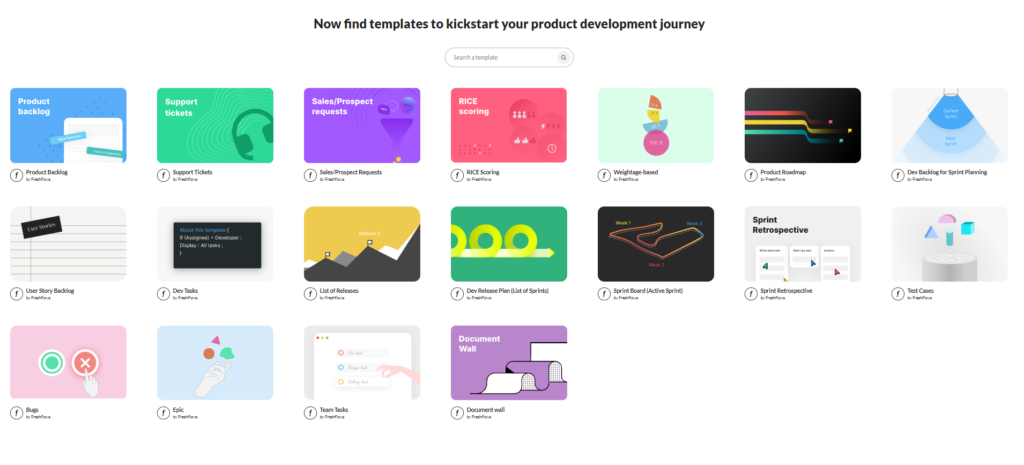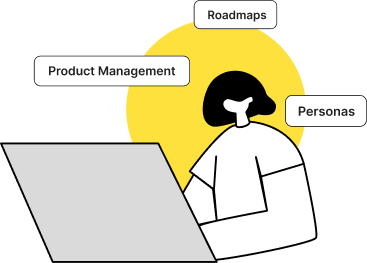One of the most challenging, but crucial, aspects of product management is determining how to make decisions in the face of so many competing objectives. Product Prioritization needs determining which products or features to develop first, based on factors such as business goals, market opportunity, and technical feasibility. Prioritization has always been one of the most difficult stages of product management. Product managers (PMs) are constantly confronted with divergent requirements from customers, sales teams, development teams, and customer success teams. Everybody has wants, and they often go to the product team for answers. Despite the proliferation of priority frameworks over the last decade, such as RICE, MoSCoW, Kano Model, Opportunity Scoring, etc, product prioritization continues to be a common concern across enterprises.
So, why is product prioritizing so difficult? Let’s break it down into a few typical errors made by product teams and discuss the ways we can fix them.
Pitfall – 1
Miscommunicated scoring guide –

What is the significance of a “2” impact score? A 1% increase or a 10% increase in terms of Monthly Recurring Revenue or conversion rate? Is this the opinion of other teammates? No side-by-side comparison can be made across efforts without agreed-upon grading criteria. As a result, setting priorities is a waste of time. Because you’re effectively masking your beliefs as objective conclusions, you’re increasing the chances of a conflict amongst your team members, which might be problematic.
Fix – Develop a grading guide for your prioritizing criteria that you can all use. Explain in detail and with specific examples what each level comprises. You may design a scoring guide for any prioritizing approach, provided that it is:
- particular to your product and team’s environment.
- goal-oriented and crystal-clear.
As an example, you may utilize RICE Prioritization’s Impact Scoring approach to provide you with an estimate of how much a new feature will affect a particular segment of the customer base. The scoring system looks like this –
- 3 = Massive Impact
- 2 = High Impact
- 1 = Medium Impact
- 0.5 = Low Impact
- 0.25 = Minimal Impact
Despite the existence of a standard, there will still be differences — and that’s OK. Everyone in the team should feel comfortable sharing their thoughts and opinions with the rest of the group. Your team members will learn about each other’s strengths and weaknesses via these dialogues.
Pitfall -2
Not reaching out to the public as a part of the prioritization process

For PMs, there is only an internal, one-dimensional view of the desirability of a feature. PMs need to be able to constantly question their own biases to succeed. No matter how certain the PM is about a feature proposal, he or she can’t be sure whether it’s a wise investment of time and money if he or she doesn’t hear from consumers first.
Fix – 3 words “Product Feature Validation”. The most crucial thing is to do some type of validation before gathering insights on high-priority issues for the next sprint. Whether you want to do user interviews, beta testing, A/B testing, or surveys, it’s vital to the prioritizing process to verify ideas at some level once they’ve been put through a prioritization framework or a value vs. cost quadrant.
The following are some of the questions that a good customer validation process should assist you in answering:
- How much will the users profit from it?
- How important is it to the users?
- Is it addressing a problem or not?
- How often will it be used?
- How much time will individuals devote to it?
Pitfall 3 –
Not considering the constraints

Product development is an inherently chaotic process. Aside from the fundamental value-versus-cost assessment, dependencies, timelines, talent fit, and strategy fit, other restrictions also impact prioritized choices. PMs cannot simply reject these constraints, no matter how urgent the prioritizing is. Teams that do not have a robust framework in place to cope with these external issues sometimes lose faith in their prioritizing methods.
Fix – Create a set of rules for dealing with these limiting factors and include them in your priority system.
Example –
- Time-sensitive developments – Each month, set aside a certain amount of resources to expedite developments with non-negotiable deadlines (e.g., product launches, product testing, etc). Everything else will go as usual, even if some components are omitted.
- Dependencies – Once a work that has been stopped by another item is removed, the blocked task will revert to its previous place in the queue. However, it should not halt the ongoing advancements.
- Strategic alignment – Give more weight to product characteristics that align with the company’s strategic priorities. This may be accomplished via the use of the Weighted Scoring system.
When you have a consistent set of guidelines, people will develop faith in the system because they will know that all decisions are made objectively.
Pitfall 4 –
Prioritization based on Personal Bias

Product managers must prioritize based on their understanding of the industry, the target audience, and the product. However, if you detect a correlation between lukewarm client responses to a product and biased prioritizing, you should reconsider many factors.
Fix – In an ideal world, PMs should have a framework that guides them through the process of prioritizing backlog items and user stories based on their desirability, practicality, and viability:
- Desirability: How many consumers are willing to pay for it? How desperately do they want it? (Values for validation)
- Practicality: Do we possess the necessary resources (time, finances, and effort) to construct it?
- Viability: Will it be profitable?
Pitfall 5 –
Irrelevant features in Backlog

The backlog should not be used as a notepad for everyone to scribble down odd product ideas. It is intended to serve as an intuitive and well-organized resource for pertinent efforts. To do this, it is critical to have a clear product vision—and to ensure that everyone adheres to it. You may be wondering what a clear product vision has to do with a clogged product backlog. When everyone understands and adheres to the product vision, PMs can be certain that proper ideas are being generated and added to the backlog.
Fix – Here is a breakdown of the ideal product vision
- Target Group – Which market sector is the product targeting, who are the product’s consumers?
- Needs – Which requirements does the product address and how does it add value to the consumer experience?
- Product – What are the most critical characteristics of the product’s success? What is the product’s unique selling proposition and how can it be built?
- Value – How will the product assist the business? What are the sources of income for the company? What is the intended price?
A strong product vision articulates the PM’s long-term expectations for the product’s influence on customers and the industry. Additionally, product vision is meaningless if no one on the team is continuously considering it while screening for feature requests to be added to the backlog.
The most effective approach to achieve this is to discuss with your team what they believe the vision implies. When conducting these discussions, the objective should be to get everyone on the same page. This may be accomplished via prioritizing activities, such as the one we had in our previous blog using the MoSCoW prioritization exercise with Spotify features. This will motivate everyone to quantify what is important to the business.
Conclusion –
Teams should collaborate to ensure that features are prioritized and organized according to the factors that matter most to the business. Maintaining ongoing cooperation and a conducive atmosphere for thoughts and opinions will also help everyone feel heard. Additionally, by defining those principles, the team might feel as if their contributions are based on qualitative and quantitative criteria. When PMs take the time to define these priority guidelines, they can be certain that their time and effort will be spent on the projects that are most important to the product, the organization, and the consumers.

Finally, PMs can always depend on Freshflows Prioritization templates to keep them on track, including RICE, Value vs. Effort, MoSCoW, and Weighted Scoring. They just need to input data and, if required, tweak it.

